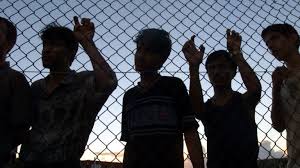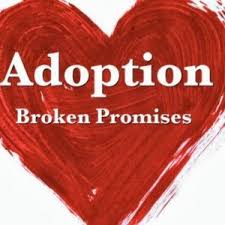
Assessing Australia’s obligations towards asylum seekers
Order Instructions:
The welfare and future of asylum seekers in Australia have been very contentious contemporary issues. Findings based on content analysis of media releases in 2001 and 2002 reveal the unrelentingly negative way in which the federal government portrayed asylum seekers.
SAMPLE ANSWER
Assessing Australia’s obligations towards asylum seekers
Influence of the international human rights law on the sovereignty of Australia
In the recent years, public debate has increasingly related the issue of border protection with the presence of asylum seekers at the shores of Australia (Brennan, 2012). The Immigration and Multicultural and Foreign Affairs Minister has occasionally emphasized, with reference to unauthorized boat arrivals, that Australia as a sovereign country needs to defend the integrity of its borders. The Australian courts have also made affirmations on the issue of who should and should not enter and remain in the country. It’s evident that Australia is entitled to establish, administer and execute its immigration policy as well as maintain national security, and these objectives inevitably involve border protection (Creek, 2014).
Today’s concept of sovereignty, nevertheless, is not absolute. Sovereignty does not imply that a nation may do whatever it wants, whenever it wants, to whomever it wants. If it was this way, then there would be a breakdown in international cooperation. Australia, as a sovereign nation, acknowledges that respecting certain rights and obligations is paramount to the maintenance of its position in the international community (Foster, 2011).
Australia has shown its willingness to participate in the international legal system as well as entering into agreements with other sovereign states. In this regard, Australia has agreed to bind itself to the international system of rights and duties, which influences the manner in which sovereign states conduct their affairs. Some of the international rules that Australia has bound itself in the context of asylum seekers include; the Universal Declaration of Human Rights (UNDHR), the International Convention on Civil and Political Rights (ICCPR), the 1967 Protocol Relating to the Status of Refugees (the Refugee Convention).Through the ratification of these treaties, Australia has shown its express agreement to ensure that new laws are enacted or existing laws are applied in line with the requirements of the treaties. Thus, as a ‘global citizen’, Australia must act in obedience to the treaties to which it has bound itself. Accordingly, the country needs to protect human rights and humanitarian treaties while protecting the integrity of its borders. In addition, Australia, as a ‘global citizen’ governed by the rule of law, has bound itself to the duty of enforcing its international rights and responsibilities by integrating them into the practices of the domestic courts, executive, and legislature. Australia is thus obligated to protect the fundamental human rights and freedoms of all asylum seekers who arrive in the country, regardless of the manner of their arrival (Foster, 2014).
Australia’s response to asylum seekers
The complexity and magnitude of issues arising from the influx of refugees and asylum seekers has posed numerous challenges to the world’s destination countries such as Australia. Australia has continually struggled with the maintenance of a balance between the protection of national borders and protection of millions of asylum seekers. Historically, Australia has for a long time accepted refugees for resettlement. Since 1945, over 700,000 displaced persons and refugees have settled in the country. Despite the country’s long-term commitment, Australia is experiencing a massive deal of misinformation and confusion in the public debate with regard to ‘boat people’, ‘queue jumpers’, ‘illegals’, refugees, and asylum seekers. These terms are often used interchangeably and/or incorrectly.
The Australian offshore policy provides for the detention of unauthorized both arrivals at offshore places such as Christmas Island until a Visa is granted or they are removed from Australia. The asylum seekers who do not meet the definition of refugees as provided under the UN Convention are resettled. The government has also set a program for assisting some asylum seekers while their applications for protection are being processed. The forms of assistance include welfare services such as professional assistance and income support and temporary eligibility for Medicare. However, these assistance are not usually granted to all applicants as one must be in financial hardship and their eligibility is usually reviewed by the government on a regular basis to establish any changes in the situations. Nevertheless, Australia has been criticized for using too much authority over its sovereignty to subject asylum seekers to unfavorable conditions that contravene international human rights law and the refugee law.
Australian politicians have been criticized for fueling anti-asylum seeker sentiments among the people in order to get votes, by labeling asylum seekers as “queue jumpers” and relating them to criminal activities such as smuggling (Tuckfield, 2014). More recently, there was a “stop the boats” campaign that aimed at reducing the number of asylum seekers drowning at the sea. In addition, the government has been advocating for the incarceration of innocent asylum seekers through adverse ASIO assessments. Furthermore, the former government ensured that foreign workers were placed at the back of the queue for Australian jobs.
The UN Human Rights Committee, in 2013, stated that Australia had acted in violation of the International Convention on Civil and Political Rights (ICCPR) through the arbitrary detention of refugees, failure to provide an effective judicial remedy, and subjecting detainees to harsh conditions which are psychologically harmful (Creek, 2014). Thus, Australia should make efforts to ensure that the rights of asylum seekers are protected.
Bibliography
Brennan, F. (2012). Australia’s 20 year search for the right asylum policy. Eureka Street, 22(12), 27.
Creek, T. G. (2014). Starving for freedom: an exploration of Australian government policies, human rights obligations and righting the wrong for those seeking asylum. The International Journal of Human Rights, (ahead-of-print), 1-29.
Foster, M. (2011). Refugees, Asylum Seekers and the Rule of Law. International Journal of Refugee Law, 23(2), 431-434.
Tuckfield, H. (2014). Australia’s Troubling Asylum Policy. The Diplomat. Retrieved from: http://thediplomat.com/2014/02/australias-troubling-asylum-seeker-policy/
We can write this or a similar paper for you! Simply fill the order form!






